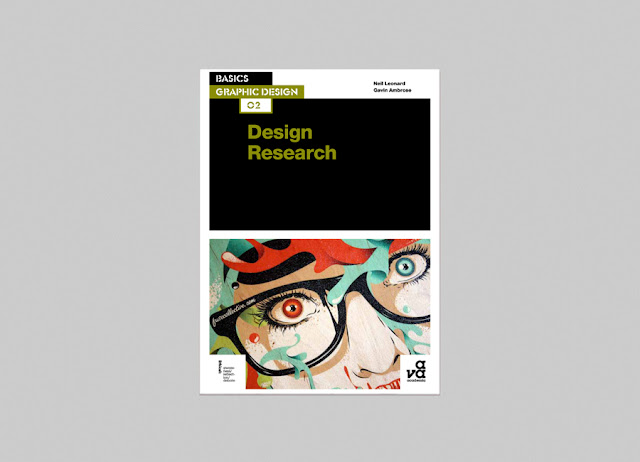Title: Basics Graphic Design 02: Design Research: Investigation for Successful Creative Solutions
Author: Ambrose, G. Leonard, N
Publisher: Ava Publishing
Year: 2012
Some notes and quotes from Design Research by Gavin Ambrose. Reading this allowed me to find out a little bit about productive rresearch and also about how closely related society and graphic design affect each other, one of the underlying themes in my research project.
Very helpful to read as it really opened up ideas for process based research I can undertake such as emulating the design process before computer just like someone like Muller-Brockman did and comparing to now when tackling a project.
---------------------------------------------------
Notes
-
1. Basics of research
2. Understanding context
3. Planning your work
4. Conducting research
5. Using your findings
6. Presenting your findings
------------------
1. Basics of research
"Best research happens when you put yourself in the place of your audience by interacting with this group and familiarising yourself with the context of your project as thoroughly as possible." - p10
The problem fully understood. The best solution offered.
Stats + Facts = Library
Look at what has already been created in the are you're researching and thinking about producing work for.
Primary - New work/research generated by you.
Secondary - Investigation into ideas already done by others.
Tertiary - Summarisation or review of a body of secondary research.
Research should be hand-in-hand with the design process.
"Research is formalised curiosity. It is poking and prying with a purpose." - Zora Neale Hurston - p18
--------
2. UNDERSTANDING CONTENT
"Any change in society can greatly alter how a piece of design is understood, as the audience brings with them a different set of experiences and cultural connotations." - p39
Social role of a designer. First Things First Manifesto
Design + Context
"Understanding what has come before will help you to see where you are now, and where culture and design might go next. To get a broad overview of design history you should investigate the cultural and historical events that shaped it." - p50Relates to investigating Swiss and American design movements and unique sensibilities post WWII and what cultural and societal factors played in to it - to truly get a better understanding.
"Modernism - Continued the revolt against the art world that the avant-garde and impressionists began. Modernists sought to re-shape and improve their surroundings and create new works. A lot of design created at this time sought to highlight the materials used." - p51
Society > Design
Society < Design
"Post-modernism - Reaction to modernism and rejected many of its ideas. Post-modernism is not a particular style, as such, rather an overall idea.. The way of thinking rejects the strict rational and superficial processes employed in modernism." - p51
4. CONDUCTING RESEARCH
1. Approach audience members.
2. Participant + Non-participant observations
3. Questionnaires - design considerations and influences?
4. Surveys - Process before and after computer, stereotypes and interpretations of European and American modernism
5. Interview - Similar questions as survey. Target different demographics of designer
6. Fieldwork - Research where your work will be exposed.
7. Trend-spotting - A form of field based research that aims to identify trends that are about to emerge. > Similar to research into possible global style of graphic design
8. Crowdsourcing - Asking specific crowds with tasks + questions
TRENDSPOTTING
Trends within Graphic Design
Observe and talk to people who are deemed to have an interesting or innovative personal style
Quiz about origins and influences on their design style and education - compare different answers to different nationalities and generations of designer to compare and contrast ethics, intentions and opinions on design in regards to nationality and design sensibility.
Relates to personal style, pattern, colour and material, can be easily applied to graphic design as all areas of art and design feed into and inform one another
Find patterns
PROCESS BASED RESEARCH
Different processes - post-war technology process, cost-wise compare to current technology
Undertake same process as Swiss european designers post WWII and compare to the same process now
Any intangible and unavoidable differences in technology and process contribute to recognisable design styles?
Always ask yourself how has it been made?
Look into exemplary Swiss and American design such as Muller-Brockmann, Vignelli, Crouwel, Karl Gerstner, Paul Rand, LuBalin, George Lois, Milton Glaser etc.










0 comments:
Post a Comment